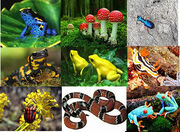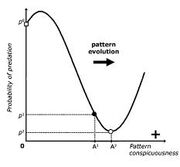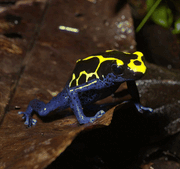

Figure 1. Provided by Joron (2003), shows how the conspicuousness of a pattern effects predation.

There are many organisms that use conspicuous aposematic traits to deter potential predators. Bright and vivid colors (usually black and another color) used by organisms to stand out to predators to warn them of bad taste or that they are poisionous. Aposematic traits are found in various fish, bird, insect, and amphibian species (Ruxton et al. 2004) and generally these conspicuous coloration patterns evolve as toxicity levels increase (Wang, 2011). Multiple studies have revealed that the more conspicuous the aposematic trait, the more likely predators will learn to distinguish and avoid that species faster than cryptic, harmful prey (Prudic, Skemp, & Papaj, 2007).
With a wide variety of predator species that are less sensitive to hue and chromatic contrast, natural selection favors colors that provide a stark contrast with their background as well as pattern contrasts on the species (Prudic, Skemp, & Papaj, 2007).
Exceptions to the Toxicity Rule
Interestingly, many species with aposematic traits demonstrate more brilliant and feared coloration when the individual’s toxin levels are high (Ruxton et al., 2004). However, in 2011 it was discovered that contrary to prior thinking polymorphic Poison-dart frogs with less conspicuous traits are actually more toxic than their aposematic conspicuous relatives (Wang, 2011).
References
Joron, M. (2003). Aposematic Coloration. Encyclopedia of Insects, 39-45.
Prudic, K., Skemp, A.., and Papaj, D. (2007). Aposematic coloration, luminance contrast, and the benefits of conspicuousness. Behavioral Ecology, 18:41–46.
Ruxton, G. D., T. N. Sherratt, and M. P. Speed. 2004. Avoiding attack: the evolutionary ecology of crypsis, warning signals and mimicry. Oxford University Press, Oxford, U.K.
Wang, I. (2011). Inversely related aposematic traits: Reduced conspicuousness evolves with increased toxicity in a polymorphic poison-dart frog. Evolution, 65(6), 1637-1649.